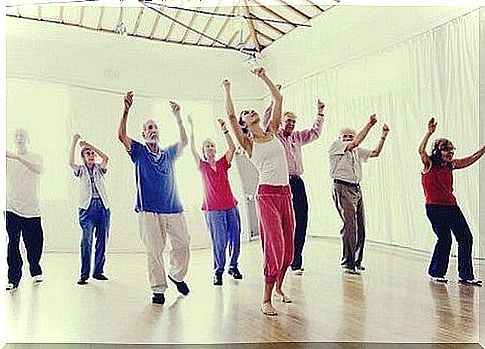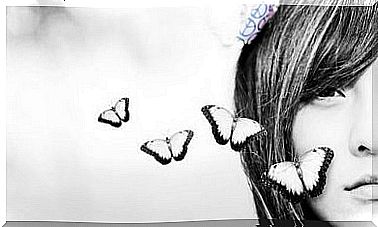Dancing In Old Age And Its Benefits

The benefits of dancing in old age are many. We are talking about an activity that improves mobility and balance, and which decreases joint stiffness. One of the greatest virtues of dance, however, is emotional well-being. Dancing generates joy, confidence and motivation. In this way, most people in old age manage to reduce the time spent in the sea of negative emotions. The feelings aroused by unwanted loneliness are turned away.
Charles Baudelaire used to say that one way to reveal the mysteries of music is to channel it through dance. Those who have some experience with this practice already know this. On the other hand, it is quite common to approach dancing in the third age , that is, starting from sixty or seventy years.
The dance has no age, we know that. However, on certain occasions it can represent an authentic awakening in a physical and emotional sense. We cannot overlook the importance of continuing to find motivations in this last phase of the life cycle which, as we know, extends for many years given today’s life expectancy.
Currently, the image of this population group to which we attribute the label of the third age has changed a lot. We find active men and women willing to explore new environments in which to continue to feel fulfilled. Dancing in the third age is an extraordinary practice in this sense. It improves physical health and optimizes social relationships and connection with the surrounding environment.

Dancing in old age: what are the benefits?
Old age must not be associated with an inevitable recession in which physical and cognitive abilities are reduced to zero. Each person faces this stage of his life in a particular way. This way depends on his personal orientation, his possibilities, his habits and his health.
One aspect to take into account, however, is prevention. Maintaining a series of concrete strategies in everyday life will affect the quality of life enjoyed and perceived. Factors such as nutrition or relying on a social network and significant support are factors that optimize, in most cases, living the third age with more happiness and in a better state.
Among the benefits of dancing in the third age we remember that it harmonizes multiple dimensions that favor well-being in this phase of the life cycle. If we know someone who has not yet undertaken this practice, it is worth encouraging them to start.
Dancing improves the lives of people with Parkinson’s
In a study carried out at the University of Washington School of Medicine, dancing was shown to significantly improve the lives of people with Parkinson’s disease. This practice is so good that it is considered a real therapeutic tool to improve the following aspects of health:
- Reduces the rate of falls.
- Improve motion, pace, speed and flexibility.
- It makes cognitive processes such as attention and memory stronger.
- Improve self-esteem.

It reduces the symptoms associated with depression
Doctors Amanda Haboush and Mark Floyd of the University of Nevada completed research involving several hospices that have dance programs. A good portion of the elderly diagnosed with mood disorders began to show noticeable improvements after just two weeks. They felt less depressed, showed fewer signs of stress, anxiety, and insomnia problems.
Once retired, an excellent way to find new incentives is to enroll in a specialized center. Some of the best benefits of dancing in old age are avoiding isolation, establishing connections with other people and preventing dimensions such as apathy, lack of incentives and motivation.

A moving body makes the brain happy
A moving body sharpens the senses, thus making the connection between the individual and the outside world stronger and more effective. Moving to the rhythm of music “turns on” the brain, gives extra doses of serotonin and endorphin. It makes you laugh, improves your attention, helps you forget the physical pain and at any moment life makes more sense.
Following a research conducted by the University of Saint Luis, it was found that two weekly dance sessions reduce, in just two months, the number of drugs to calm inflammation in 80-year-olds. The pain associated with arthritis and osteoarthritis was reduced, cardiovascular health remained more stable and even the movements of the subjects in question were more agile and faster.
Experts tell us that dancing is of great benefit to the brain because it allows you to combine cardiovascular and neuronal activity. It is interesting to remember that dance forces us to make quick decisions and this not only makes the neuronal network stronger, but also allows us to create new communications.
The benefits of dancing in old age enjoy scientific support. At the same time, they are more than evident both for those who have always practiced it and for those who have recently approached it. The dance has no age and helps to give quality and life to each completed year.









